1996 Toyota Tacoma Service, Tires & Repairs
Get Started
Complete Auto Care for Your 1996 Toyota Tacoma
-
TIRES FOR YOUR 1996 Toyota Tacoma View Tire Info GET TIRE PRICING
-
REPAIR FOR YOUR 1996 Toyota Tacoma View Repair Info SCHEDULE REPAIR
-
MAINTENANCE FOR YOUR 1996 Toyota Tacoma View Maintenance Info SCHEDULE MAINTENANCE
-
OFFERS FOR YOUR 1996 Toyota Tacoma Limited Time Tire Offers VIEW ALL COUPONS
1996 Toyota Tacoma Tires
Recommended Tires | Tire Information
1996 Toyota Tacoma Tires Sizes, Speed Ratings, and Inflation
Not sure about your 1996 Toyota Tacoma tire size? Use the following chart to find information on tire size, speed rating, and inflation.
| Trim Level | Speed Rating | Inflation in PSI F/R | Tire Size |
|---|---|---|---|
| 1996 Toyota Tacoma Base* | None | 29 PSI/32 PSI | 31x10.50R15LT/C |
| 1996 Toyota Tacoma Base* | S | 29 PSI/35 PSI | P195/75R14 |
| 1996 Toyota Tacoma Base* | S | 29 PSI/35 PSI | P215/70R14 |
| 1996 Toyota Tacoma Base* | S | 35 PSI/35 PSI | P225/75R15 |
| 1996 Toyota Tacoma Base* | S | 29 PSI/35 PSI | P215/70R14 |
| 1996 Toyota Tacoma SR5* | S | 35 PSI/35 PSI | P225/75R15 |
| 1996 Toyota Tacoma SR5* | None | 29 PSI/32 PSI | 31x10.50R15LT/C |
|
1996 Toyota Tacoma Base* Speed Rating: None Inflation F/R: 29 PSI/32 PSI |
|
1996 Toyota Tacoma Base* Speed Rating: S Inflation F/R: 29 PSI/35 PSI |
|
1996 Toyota Tacoma Base* Speed Rating: S Inflation F/R: 29 PSI/35 PSI |
|
1996 Toyota Tacoma Base* Speed Rating: S Inflation F/R: 35 PSI/35 PSI |
|
1996 Toyota Tacoma Base* Speed Rating: S Inflation F/R: 29 PSI/35 PSI |
|
1996 Toyota Tacoma SR5* Speed Rating: S Inflation F/R: 35 PSI/35 PSI |
|
1996 Toyota Tacoma SR5* Speed Rating: None Inflation F/R: 29 PSI/32 PSI |
* Note: these models have different tire sizes depending on vehicle options.
Recommended Tires for Your 1996 Toyota Tacoma
What tires are best for a 1996 Toyota Tacoma? Check out the following tire brands and types.
 Destination LE3
Destination LE3
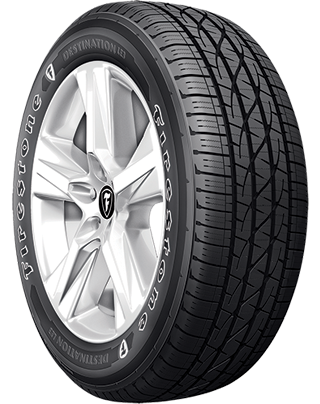
- No warranty
- All-Season
- Light Truck Tires
 Destination M/T2
Destination M/T2
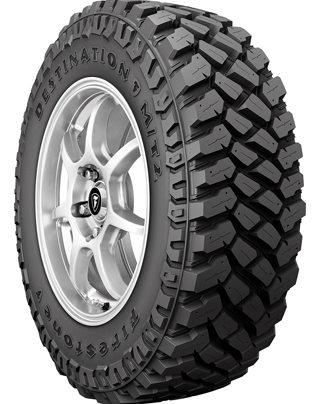
- No warranty
- All-Season
- Light Truck Tires
 Destination X/T
Destination X/T
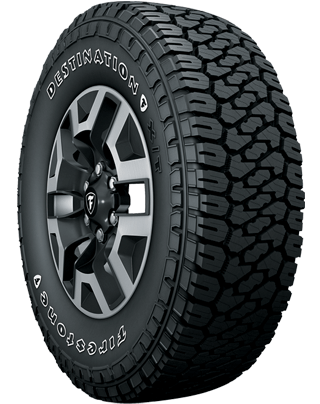
- Gold Pledge Limited Warranty
- All-Season
- Light Truck Tires
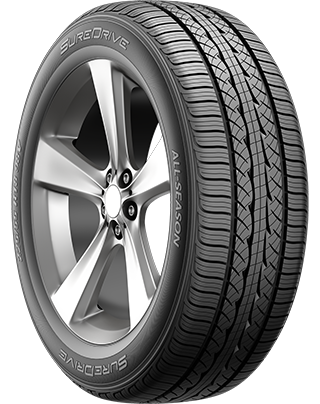
- No warranty
- All-Season
- Passenger Tires
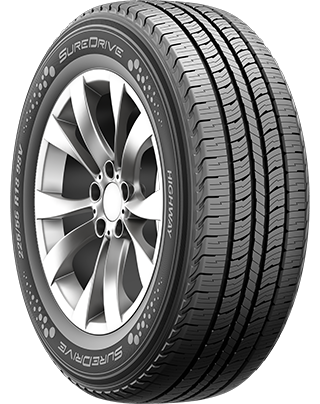
- No warranty
- All-Season
- Light Truck Tires
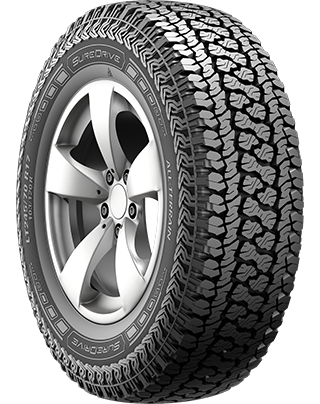
- No warranty
- All-Season
- Light Truck Tires
 Extensa A/S II
Extensa A/S II
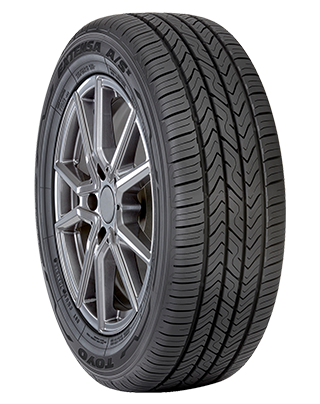
- No warranty
- All-Season
- Passenger Tires
 OPEN COUNTRY A/T III
OPEN COUNTRY A/T III
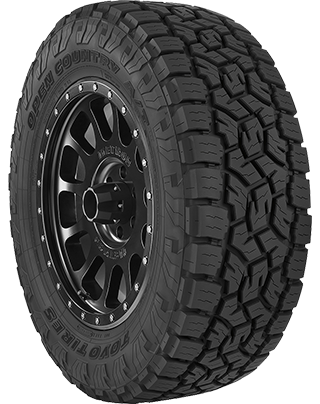
- No warranty
- All-Season
- Light Truck Tires
 OPEN COUNTRY M/T
OPEN COUNTRY M/T
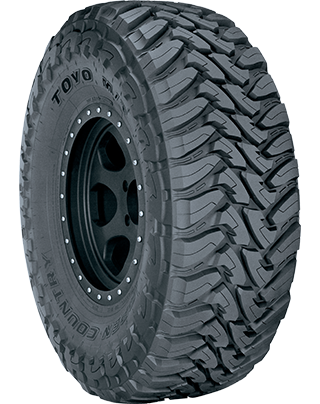
- No warranty
- All-Season
- Light Truck Tires
 OPEN COUNTRY R/T
OPEN COUNTRY R/T
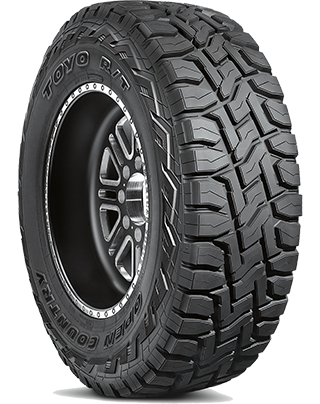
- No warranty
- All-Season
- Light Truck Tires
Choosing 1996 Toyota Tacoma Tires
Beyond the correct tire size, you also want to think about a couple of other things when getting new Toyota Tacoma tires like which tire brands you like most and where you drive. Think about where you live (countryside vs. city vs. mountains) and the kind of unexpected weather you're likely to experience when evaluating your driving conditions. It's not uncommon for drivers in states that experience all four seasons to buy more than one set of tires. one set for winter, one set for summer. Other drivers prefer the convenience of all-season tires. They make one trip to the tire shop and they're pretty much ready for rain, light snow, or sun!
Your personal driving style is the next factor to consider. If you're a big off-roading fan who forges paths where others can't, you have very different needs than a long-distance commuter who sticks to the highway. Talk to a tire technician at Firestone Complete Auto Care for help choosing the best tire for you, or start shopping for Toyota Tacoma tires online.
Installing Toyota Tacoma Tires
We sell tires, but we also service them and care for all the around-the-wheel components. We're your one-stop shop for tire installation, rotation, and ongoing maintenance! We make it easy to buy new 1996 Toyota Tacoma tires online and book an installation appointment at the same time.
Questions About 1996 Toyota Tacoma Tires
-
Why check Toyota tire inflation? The right tire pressure can make all the difference. Proper tire inflation helps increase fuel economy, improve braking time, and boost tire lifespan! Even a small change in tire pressure can impact your driving.
-
Why are there numbers on the side of my Toyota Tacoma tires? Your tire sidewall gives you information about load carrying capacity, speed rating, treadwear, traction, and tire size. Talk to one of our tire technicians to learn how to read the numbers on your tire!
-
Is there an easy way to check Toyota tire tread depth? Stay on top of your tire tread depth to help avoid a dangerous drive. You can check tread depth with a penny. Hold the penny so that Abraham Lincoln is facing you, then place your penny into a tread groove upside down. If you can see the top of Abe’s head, your tread is shallow and it might be time for new Toyota Tacoma tires. Grab a penny. Hold the so that Abe Lincon's head is facing you and his hair is pointing toward the ground. Then, place the penny into a tread groove. If you can see the top of Abe’s head, your tread is shallow and it might be time for new Toyota Tacoma tires.
Repair Services for Your 1996 Toyota Tacoma
Want more details? Choose a service below to read more about Toyota Tacoma repairs at Firestone Complete Auto Care.
1996 Toyota Tacoma Repair Information
For most drivers, the words “car repair” don’t exactly spark excitement. We’re here to change that, though. At Firestone Complete Auto Care, we want to make car repair painless and hassle-free. When you come to us for 1996 Toyota Tacoma repair services, our skilled repair technicians will get your Tacoma back on the road. We'll work to evaluate the scope of repairs needed and explain your options. We’ll never recommend a repair we don’t think is necessary for your safety or the performance of your Toyota.
What Will Toyota Tacoma Repairs Cost?
The cost to repair your 1996 Toyota Tacoma depends on which repairs are needed, prices of appropriate replacement parts, how much labor the repair will take, and your locale. They're updated regularly!
A few different aspects can influence repair costs for your 1996 Toyota Tacoma, like
1996 Toyota Tacoma Auto Repair Questions
-
Do I need to follow Toyota's maintenance schedule? The cheapest 1996 Toyota Tacoma repair is the one that isn’t necessary in the first place! Staying up-to-date with your car’s scheduled maintenance services is a great way to keep future repair costs low.
-
What does it mean to be 'in tune' with your car? You know your vehicle. You also know when something feels 'off' with your vehicle. Pay attention when things don't run like they used to and stop by for a Courtesy Check when you notice an unusual sign, smell, or sensation. We might be able to help you prevent Toyota Tacoma repairs!
-
Why do you recommend certain repairs for my Toyota? Trust is more than just a saying on the wall. It’s a window underneath it. That’s why we won’t recommend services or repairs for your 1996 Toyota Tacoma unless we think they’re vital to your safety on the road.
Get Your 1996 Toyota Tacoma Brakes Fixed
Your Toyota Tacoma may be powered by a strong engine. But if you can’t brake, it might as well be scrap metal. If you’re experiencing squeaky brakes or a loss of braking power, don’t wait! Unresponsive brakes make it tough to give the road your best. Plus, ignoring your brake problems can result in more damage and higher brake repair bills. Get your 1996 Toyota Tacoma brakes fixed at Firestone Complete Auto Care. We offer many affordable brake repairs like pad/shoe replacement, brake rotor/drum resurfacing, brake fluid exchange/bleeding, and brake caliper and wheel cylinder service.
Questions About Your Toyota Tacoma Brakes
-
Why is my Tacoma shaking as I brake? Feeling shaking or vibrating in your Tacoma as you brake might indicate a few different problems, including worn brake pads or rotors, loose suspension components, damaged brake calipers, or warped rotors. Book an appointment for a free brake inspection as soon as you notice a problem with your brakes.
-
What is the average lifespan of Tacoma brake pads? In general, brake pads can last from 30,000 to 40,000 miles. Certain factors, like driving on highways mostly and braking smoothly, can help your brake pads last longer. Hauling heavy loads and riding your brakes can shorten brake pad lifespan.
-
Is it bad if my Tacoma is leaking brake fluid when off? Because your Tacoma brake system is a closed hydraulic system, it should not leak brake fluid. However, if components in your brake system have worn out or been damaged, it might cause brake fluid to leak.
When to Get Toyota Tacoma Drivetrain Repairs
Drivetrains for front, rear, and all-wheel-drive and 4WD vehicles are not all the same. You don't want to go to any random shop for drivetrain repair. You want to visit Firestone Complete Auto Care. We can help repair all of your 1996 Toyota Tacoma drivetrain components Your Toyota could be crying out for driveshaft repair if you notice vibration as your vehicle accelerates, clunks when shifting, heavy vibrations in your floorboards, or resistance when turning.
Questions About 1996 Toyota Tacoma
-
What are signs my Toyota drivetrain is damaged? Hear noises toward the back of your Toyota Tacoma? See fluid leaking? Having issues turning? These could all be signs of drivetrain damage you don't want to ignore. Take action quickly to catch repairs or replacements before something more severe happens.
-
What triggers the malfunction indicator light (MIL) in a Tacoma? If your Tacoma has its malfunction warning light (more commonly called the check engine light) illuminated, it could indicate engine troubles, problems with the transmission, electrical issues, malfunctioning sensors, connector problems, or misfire issues.
-
How worried should I be about a drivetrain malfunction in my Tacoma? A drivetrain malfunction in your Tacoma should never be taken lightly. Driving with a malfunctioning drivetrain can put you in danger and lead to further vehicle damage, so it's essential to have a qualified mechanic assess and repair the problem as soon as possible.
1996 Toyota Tacoma Alignment Services
An alignment involves making adjustments to your Toyota Tacoma's suspension system, the connection between the vehicle and the wheels. During the service, your tire angles are adjusted according to measurements recommended by Toyota. Why? So that your tires can make contact with the road at the best possible angle. Before we adjust the alignment of your 1996 Toyota Tacoma, we’ll start by checking the current alignment angles. After that, we can adjust your wheel alignment angles until they match Toyota’s recommended measurements.
Toyota Tacoma Alignment Questions
-
How can I avoid knocking my Toyota Tacoma out of alignment? Potholes and uneven roads can knock your car out of alignment, so stay aware of the road ahead and adjust your speed (or avoid these obstacles whenever it’s safely possible).
-
When should you get a wheel alignment for your Tacoma? It’s usually suggested you check your alignment about every 6,000 miles or 6 months (whichever occurs first). Still, you should reference your Tacoma owner’s manual for Toyota's recommended interval.
-
Do you need an alignment with new Tacoma tires? It’s not mandatory to get an alignment after installing new tires on your Tacoma, but it can be a smart decision! Proper alignment from the jump can help improve handling, fuel efficiency, and tire wear.
1996 Toyota Tacoma Engine Repair
If your 1996 Tacoma engine needs repairs, our expert techs will let you know what needs to be done and why before they get started. We don't start working until we have your approval. If a repair can wait, we'll let you know. We'll also tell you if it's necessary for your safety. We want to provide you with the information you need to make an informed engine repair decision. Turn to Firestone Complete Auto Care for your 1996 Tacoma engine repairs and you can drive easy knowing that we use Toyota-approved parts and fluids — timing chain or belt, engine oil seal, fuses, or other parts.
1996 Toyota Tacoma Engine Q&A
-
Why does my Tacoma’s check engine light come on when I start it? It’s usually normal for your check engine light to turn on upon ignition. This is just your Tacoma testing its circuits. The dash light shouldn't stay on. If it does, you might want to bring your vehicle in for service.
-
Are Toyota Tacoma engine noises bad? Strange engine sounds can be a sign something’s off in your Toyota Tacoma. Knocking or tapping could be a symptom of low oil. A high-pitched whistle could signal an intake leak or misaligned belt. Squealing can be traced back to a loose fan belt, and grinding might be a sign of brake problems rather than engine issues.
-
Are you unknowingly damaging your Toyota Tacoma engine? Certain driving habits can hurt your engine. These habits include driving on an empty fuel tank, revving your engine while the vehicle is in Park, or slamming the gas pedal while the engine is still cold. Steer clear of these habits to help protect engine performance and efficiency.
1996 Toyota Tacoma Tire Repair
Firestone Complete Auto Care is here for you when your 1996 Toyota Tacoma needs flat tire repair or inspection. Our tire technicians can determine whether it's safe to plug and patch the tire, or whether it needs to be replaced. We'll start by evaluating the state of wear, the location of damage, type of damage, and the size of the damage.
If your 1996 Toyota Tacoma tire puncture can be repaired, we’ll get to work on the steps to fix it: (1) Take the tire off the wheel for easy inspection, (2) fill the puncture to keep the moisture out, and (3) seal the inner liner with a repair unit to prevent air loss.
Frequently Asked Toyota Tacoma Tire Repair Questions
-
How soon should I have my flat tire repaired? Driving on a flat tire is not a good idea. Your Tacoma engine will keep running with a flat tire, but you could damage your wheel by continuing to drive on a flat.
-
Can I use an emergency/temporary sealant to fix my Toyota's flat tire? Fast fixes are a mixed blessing. They’ll help you get your Toyota Tacoma to Firestone Complete Auto Care, but don’t count on them to keep you on the road for very long. Using a temporary sealant may also void a Bridgestone or Firestone tire warranty.
-
What is causing the tires on my Tacoma to keep losing air? Tire punctures, damaged wheels, and leaking valve stems are possible reasons for your Tacoma tires continuously losing air.
Maintenance for Your 1996 Toyota Tacoma
Take care of your Toyota Tacoma and it'll take care of you. With the right maintenance at the right time, your Tacoma has a good chance of hitting 200,000 miles or more.
Guide to 1996 Toyota Tacoma Scheduled Maintenance
There's no need to guess when it's time to get Tacoma maintenance, and no need to wait until something goes wrong. Rely on the recommended maintenance schedule that’s been created just for your 1996 Toyota Tacoma! The recommended maintenance schedule is put together by Toyota, your vehicle manufacturer. Scheduled maintenance services can vary depending on driving conditions, climate, and other factors; in most cases, though, recommended maintenance will consist of services like fluid exchanges, filter changes, new brake pads, oil changes, and tire rotations. Scheduling routine service appointments is one of the best ways to help extend your Tacoma's life, keep you safer on the road, and help you avoid expensive repairs caused by 1996 Toyota Tacoma problems later.
Learn About Vital Maintenance Needs for Your Toyota Tacoma
Bring your 1996 Toyota Tacoma to Firestone Complete Auto Care for factory-recommended maintenance services and a skilled technician will start the appointment with a Courtesy Check. This Courtesy Check can establish a baseline of what may need to be addressed during your service appointment. During a Courtesy Check, we’ll always check your battery, then we’ll move on to inspect your Tacoma’s head and tail lights, tires, fluid levels, alignment, and windshield wipers.
Firestone Complete Auto Care is your one-stop shop for 1996 Toyota Tacoma maintenance and repairs. We can help you keep your vehicle (and your life!) running smoothly. Many of our locations have weekend and evening hours for your convenience.
Questions About 1996 Toyota Tacoma Maintenance
-
When should I have Toyota Tacoma alignment checked? You know your Toyota Tacoma better than anyone else, so you’ll know if something doesn’t feel right while driving. Have your alignment checked (and adjusted if necessary) as soon as you notice a pulling steering wheel to prevent suspension damage or uneven tire wear.
-
When should I use high mileage oil in my Toyota Tacoma? Do you have more than 75,000 miles on your Toyota Tacoma? If so, request to switch to high mileage oil at your next oil change. This type of oil is specially formulated to keep aging engine parts in the best possible condition.
-
Can I ignore dashboard lights on my Toyota? Don't ignore dashboard warning lights! Bring your Toyota Tacoma in for a diagnostic code scan as soon as a dashboard warning light flashes on, whether it's your check engine or battery light. Dashboard lights alert you to trouble under the hood.
1996 Toyota Tacoma Battery Replacement & Size
Need more info about Toyota Tacoma batteries?
| Battery | Engine | Warranty | Cold Cranking Amps | |
|---|---|---|---|---|
| 24F-3 | L4/2.4L | Replacement 24 months | Performance months | 650 |
| 35-2 | L4/2.4L | Replacement 36 months | Performance months | 640 |
| 24F-RP | L4/2.4L | Replacement 48 months | Performance months | 750 |
| 24F-3 | L4/2.7L | Replacement 24 months | Performance months | 650 |
| 35-2 | L4/2.7L | Replacement 36 months | Performance months | 640 |
| 24F-RP | L4/2.7L | Replacement 48 months | Performance months | 750 |
| 35-1 | V6/3.4L | Replacement 24 months | Performance months | 500 |
| 24F-6 | V6/3.4L | Replacement 36 months | Performance months | 750 |
| 24F-RP | V6/3.4L | Replacement 48 months | Performance months | 750 |
1996 Toyota Tacoma Batteries
On average, auto batteries last anywhere from three to five years. You want to replace your 1996 Toyota Tacoma battery before it fails and leaves you stranded. Watch for signs that your current battery is getting too old or too weak. A slow engine crank, an illuminated battery or check engine light, bloated battery case, corrosion-covered posts, or weak lights may all indicate that your battery is on its last leg.
Or, you can get a complimentary battery check at your nearest Firestone Complete Auto Care. Visit us for a complimentary battery check and, if needed, get your Toyota Tacoma a replacement battery. Car batteries are one of our many specialties! Our technicians are familiar with Toyota-specific recommendations for Tacoma battery CCAs and reserve capacity. Get help identifying the type and size of battery that's best for your Tacoma, and schedule a weekday or weekend battery replacement service for your car.
Top Toyota TacomaCar Battery Questions
-
Why won't my Toyota Tacoma battery stay charged? A battery that won't hold a charge is almost as good as dead. The battery might be old. Or, you may have a habit of leaving your car doors open and the lights on overnight. Stop by for a free battery test at your local Firestone Complete Auto Care to learn more about the state of your battery.
-
How long do car batteries last? The typical 12-volt car battery may last three to five years, depending on the type of battery, the driving conditions, and how well the battery is maintained.
-
Why is there white, crusty buildup on my Tacoma’s battery post? The white, crusty stuff that can accumulate around Tacoma car battery terminals is called corrosion. It is caused by a chemical reaction between the battery acid and the air, which creates a white, powdery substance that can build up on the terminals over time. Corrosion can interfere with the flow of electricity between the battery post and the car's electrical system, sometimes leading to poor electrical performance, difficulty starting, and even premature battery failure.
1996 Toyota Tacoma Oil Changes
Toyota recommends changing your 1996 Tacoma’s oil at regular intervals. Outside of Toyota-recommended oil change intervals, your Tacoma may need an oil change if your check engine light is on, you hear knock knock knock coming from the engine, smell oil inside the car, or see an excess amount of vehicle exhaust. You might need an oil change more frequently than what’s recommended by Toyota if you regularly haul heavy loads, frequent dusty roads, enjoy off-roading, or drive at low speeds for long distances.
Your local Firestone Complete Auto Care has the right 1996 Toyota Tacoma motor oil: either synthetic or conventional. Check your owner's manual and talk with a technician to select the right Toyota Tacoma oil, whether it's Quaker State® Advanced Durability™ conventional oil, Pennzoil® High Mileage Vehicle® motor oil, Pennzoil Platinum® Full Synthetic motor oil with PurePlus™ Technology, or Shell Rotella® heavy-duty engine oil. During your oil change service, an auto technician will change your Tacoma’s oil, replace and recycle the old oil and filter, inspect all of your other filters, top-off essential fluids, and perform a free inspection on the rest of your vehicle. Get professional engine care by making an oil change appointment for your Tacoma today.
1996 Toyota Tacoma Oil Change Q&A
-
What does it mean if my Toyota Tacoma oil light comes on? The oil change light in your Toyota Tacoma could be triggered by an overdue oil change. However, if the oil pressure light is on, you may be dealing with low engine oil, a failing oil pump, a clogged oil filter, or a malfunctioning oil pressure sensor.
-
How hard is it to change Toyota Tacoma oil at home? First off, changing your own oil isn’t as easy as you’d think. You’ll have to buy special tools and figure out a way to recycle the old oil properly. Getting a professional oil change reduces the risk of something going wrong during the service, but also helps your car perform down the road.
-
Why is my Toyota exhaust smoke gray or blue? Your engine could be burning oil due to a leak. It may be time for a pro to take a look. A leak can be caused by a variety of issues including faulty valve seals, blown piston rings, or damaged cylinder walls.
1996 Toyota Tacoma Engine Tune-Ups & Maintenance
Periodic tune-ups can bring more power back to your Tacoma’s engine. Your local Firestone Complete Auto Care offers a range of engine tune-up services for your 1996 Toyota Tacoma. The first is the standard Firestone Tune-Up. This includes the installation of new spark plugs and a visual inspection of your engine’s components, plus a lifetime warranty on parts*. The second service focuses on your Tacoma's filters, specifically replacing the air filter and fuel filter. The third tune-up option is a fuel system cleaning service, which is a three-step process that removes varnish, dirt, and carbon deposits on your Tacoma's fuel injectors, throttle body, and throttle plate. This goes a long way in boosting your fuel system’s overall performance. Consider this when choosing a tune-up service for your Tacoma: your vehicle’s maintenance record and mileage can determine which service is best. Talk to a technician about your driving style, mileage, and service history to learn more about your vehicle's specific needs.
*Check with a teammate at Firestone Complete Auto Care for complete terms and conditions regarding warranties.
1996 Toyota Tacoma Engine Tune-Up Q&A
-
What happens if my Toyota Tacoma spark plugs fail? Replace spark plugs on time or about every 30,000 miles or so. Without the spark of electricity created by spark plugs, your engine doesn’t have the combustion it needs to start — which could leave you stranded on the road. Always replace your spark plugs on time based on Toyota’s recommendations.
-
What do I do if I see a pool of liquid under my Toyota Tacoma? Puddles could indicate an oil leak, coolant leak, or brake fluid leak– all of which can critically hurt your engine. Have your engine inspected as soon as you spot a pool of liquid in your usual parking spot.
-
How often should I clean my Toyota Tacoma fuel injectors? The cleaning schedule for vehicle fuel injectors varies depending on your driving conditions and the type of fuel you use. Some manufacturers suggest cleaning your fuel system as part of routine maintenance, while others will recommend it on an as-needed basis if you’re experiencing poor performance. Reference your Toyota owner’s manual for exact guidelines.
1996 Tacoma Toyota Steering & Suspension Services
When you first drove your 1996 Toyota Tacoma, the ride was probably so smooth that you didn’t even think about it! But these days, things are starting to feel a bit rough. Maybe your Tacoma bounces, drifts to one side, or makes an unusual noise when going over a speed bump. As soon as you notice that something’s “off” with your 1996 Toyota Tacoma, bring it in for steering and suspension services. We’ll get to the source of your car problems and, if your car needs steering and suspension repairs, we’ll go over the services you need and how much they will cost before we do any work.
Questions About 1996 Toyota Tacoma Steering & Suspension
-
What can cause my Toyota Tacoma to have a bouncy ride? If your shocks or struts are in bad shape, they can’t dampen road bumps like they should. This can cause your Tacoma to bounce more than usual.
-
What can cause the front end of my Tacoma to dip forward when I apply the brakes? When you brake, the forward momentum combined with your vehicle's weight sends a lot of force to the vehicle's front end. A bad suspension can cause all that weight and force to push the front end downward.
-
What role do tire pressure and tread depth play in my Toyota's suspension? Keeping your tires properly inflated can help reduce strain on the suspension, and also help you notice when you need new tires. A tire that doesn't have an adequate amount of tread can't grip the road or function as well as the manufacturer intended.
A/C Service for Your 1996 Toyota Tacoma
Technicians at Firestone Complete Auto Care are ready to help you address your 1996 Toyota Tacoma A/C problems. During an A/C performance check, we'll determine the condition of your 1996 Toyota Tacoma A/C system to determine whether repair work is needed. This check will include an examination of system pressure, a visual inspection, and a leak test.
When we perform an A/C repair on your 1996 Toyota Tacoma, we’ll also do an A/C evacuation and recharge. To do this, one of our technicians will remove the refrigerant in your A/C system (if there is even any left to remove). Then, they’ll use Toyota’s specifications to evacuate the system. The A/C system is recharged with new refrigerant.
Questions About 1996 Toyota Tacoma A/C Systems
-
Why do I get hot air from my Tacoma A/C? An A/C blowing hot air has several possible root causes. There could be an issue with your compressor clutch, a blown fuse, a leak, or a clog in the expansion valve.
-
How does my A/C system get a leak? A/C system leaks are often due to a combination of age and moisture. Rubber seals and gaskets naturally degrade over time, allowing refrigerant to exit and moisture to enter your Tacoma's A/C system.
-
Why won’t my Tacoma’s A/C cool the vehicle when the car is stopped? Damaged or worn components in your Tacoma’s electrical or air conditioning system can cause the A/C to only work when the car is moving. You may be dealing with low coolant or a faulty cooling fan.
1996 Toyota Tacoma Transmission Service
The transmission delivers power from the engine to the wheels so that you can drive on your terms. Since the transmission has to translate the precise amount of power for your desired amount of speed, a tiny transmission issue can take a major toll on your car’s performance. 1996 Toyota Tacoma transmission issues could include shifting delays, jumping or grinding during acceleration, a feeling of shakiness, or whistling noises and a burning smell coming from under the hood. If you don’t pay attention to Toyota Tacoma transmission trouble you might notice your fuel economy decrease or find that your Tacoma isn’t working at all. Our technicians are trained to service 1996 Toyota Tacoma transmission systems according to vehicle manufacturer recommendations. Schedule an appointment at your local Firestone Complete Auto Care at the first sign of transmission problems to help keep your engine running at peak performance.
Questions About 1996 Toyota Tacoma’s Transmission
-
How often does my Tacoma transmission fluid need to be checked? Caring for your Toyota Tacoma’s transmission fluid is a great way to help it perform. About every 30,000 to 60,000 miles is a good timeframe for having your transmission fluid inspected and perhaps changed. Service intervals can vary depending on how you use your Toyota, so check with your technician first. Luckily, leaks and low fluid levels are easy to spot and inexpensive to fix.
-
Can transmission fluid leak from my Toyota Tacoma? Over time, transmission fluid can leak from your Toyota Tacoma, potentially causing transmission problems. A transmission fluid leak may be caused by a damaged transmission pan, faulty transmission cooler lines, worn-out seals, a cracked transmission housing, or an overfilled transmission.
-
Is it okay to drive a Tacoma with a transmission fluid leak? It’s not advisable to drive your Tacoma if it’s leaking transmission fluid. Your transmission system needs transmission fluid to function properly, and a leak can lead to significant problems, such as overheating or reduced performance. You might even experience transmission failure.
1996 Toyota Tacoma Inspections
When you bring your vehicle to Firestone Complete Auto Care for any service, we’ll automatically do a multi-point Courtesy Check. To start, one of our technicians will check the battery in your Toyota Tacoma to determine how much charge remains. The check will continue with a visual inspection of your Toyota Tacoma's lights, windshield wipers, filters, alignment, tires, hoses, belts and fluid levels.
While every visit to your local Firestone Complete Auto Care includes a Courtesy Check, we also offer an in-depth Complete Vehicle Inspection for your 1996 Toyota Tacoma. A Complete Vehicle Inspection includes everything in a Courtesy Check, plus a thorough manual inspection of your exhaust system, steering and suspension, and brakes. This inspection is aimed at informing you of any major problems that could require preventative maintenance.
In some cities or states, you may be able to complete your vehicle’s safety tests or state inspection at your nearest Firestone Complete Auto Care. Inspections are performed on a state-by-state basis and requirements vary.
1996 Toyota Tacoma Vehicle Inspection Q and A
-
How do I know if I should have an inspection on my Toyota Tacoma? You drive your car, day in and day out, so you know it best. If you notice unusual engine noises or you can’t shake the feeling that something is 'off,' start with a Courtesy Check to stay ahead of potential issues.
-
Help! My 1996 Toyota Tacoma failed the state inspection test. Can you get it to pass? Don’t panic! Come in for a complete inspection today and we’ll find (and repair) the root cause before you have your vehicle retested.
-
What's the ideal timing for a full vehicle inspection on my Toyota Tacoma? The best time to get a complete vehicle inspection for your Toyota Tacoma is before going on a road trip for the peace of mind. Another great time is when something abnormal occurs, and you can't pinpoint the issue. You might notice new dashboard lights, hear strange noises from under the hood, or your steering wheel doesn't feel like it once did.
1996 Toyota Tacoma Radiator Service
Staying on top of routine radiator maintenance for your 1996 Toyota Tacoma is crucial to keep your engine in the best possible shape for years to come. In fact, Toyota recommends replacing coolant/antifreeze at specific intervals, but you can also take note of any signs your radiator is going bad. You might be driving around (or about to be stranded) with a failing radiator if you see coolant leaks under your car, high engine temperatures, or a dashboard light that indicates low coolant.
At Firestone Complete Auto Care, we start by performing a thorough inspection of your Toyota Tacoma cooling system. We then do a machine-powered radiator exchange, replenish flushed chemicals, sealants, and lubricants, and then pressure check for leaks. From the radiator cap to the heater core, your 1996 Toyota Tacoma is in good hands at Firestone Complete Auto Care.
Questions About Toyota Tacoma Radiators
-
What does the coolant light on my Toyota dashboard mean? Pay attention to the temperature gauge and lights on your dashboard. If a low coolant warning light comes on or your dashboard temperature gauge keeps rising, it’s likely that your engine is about to overheat (and could leave you stranded on the road). Wait for the engine to cool down, then have your coolant system checked immediately at your nearest Firestone Complete Auto Care.
-
What can cause my Tacoma to overheat? One of the main reasons your Toyota Tacoma engine might overheat is because you don’t have enough coolant. Other causes include a clogged radiator, a damaged cooling fan, a malfunctioning thermostat, or a faulty water pump.
-
Why does the radiator in my Tacoma sound like it’s rumbling or boiling? Your Tacoma’s cooling system could contain air pockets or your radiator might be clogged. Another possibility is a faulty radiator cap, which is an easy fix!